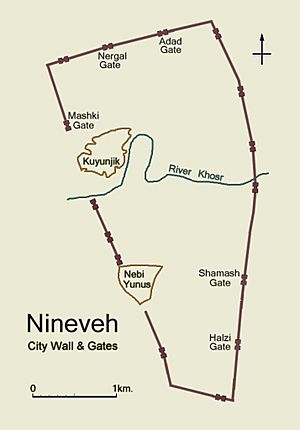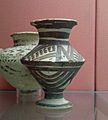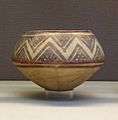Nineveh facts for kids
Quick facts for kids
Nineveh
|
|
|---|---|

Simplified plan of ancient Nineveh showing city wall and location of gateways
|
|
Nineveh was an ancient Assyrian city on the eastern side of the Tigris River. It was the capital and a major city of the Assyrian empire. Its ruins are across the river from the modern-day city of Mosul, Iraq.
The ruins of Nineveh are surrounded by the remains of a massive stone and mudbrick wall dating from about 700 BC. The wall was bout 12 km in length. The stone retaining wall had projecting stone towers spaced about every 18 metres (59 ft). The stone wall and towers were topped by three-step parapets.
The city wall had fifteen monumental gateways. They were checkpoints for people entering and exiting the city. They probably had barracks and armouries. With the inner and outer doors shut, the gateways were fortresses. The gateways had passages and interior chambers lined with finely cut stone. A stairway led from one of the interior chambers to the top of the mudbrick wall.
The city wall was destroyed by ISIS by February, 2015. The wall was destroyed during an effort to destroy historical buildings and monuments in the province by the jihadist rebel group.
Images for kids
-
Artist's impression of Assyrian palaces from The Monuments of Nineveh by Sir Austen Henry Layard, 1853
-
Bronze head of an Akkadian ruler, discovered in Nineveh in 1931, presumably depicting Sargon of Akkad's son Manishtushu, c. 2270 BC, Iraq Museum. Rijksmuseum van Oudheden.
-
Artist's impression of a hall in an Assyrian palace from The Monuments of Nineveh by Sir Austen Henry Layard, 1853
-
Relief of Ashurbanipal hunting a Mesopotamian lion, from the Northern Palace in Nineveh, as seen at the British Museum.
-
The walls of Nineveh at the time of Ashurbanipal. 645-640 BC. British Museum BM 124938.
-
The Prophet Jonah before the Walls of Nineveh, drawing by Rembrandt, c. 1655
-
Eastern city wall and Shamash Gate
See also
 In Spanish: Nínive para niños
In Spanish: Nínive para niños





















